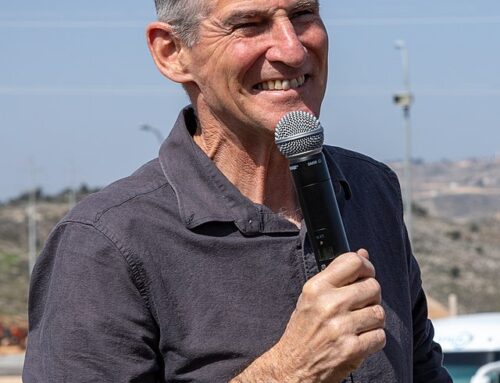[For Part I, click here.] Most Israeli military politicians prefer dealing with Arab states rather than with the Palestinians as a negotiating partner. This is because former generals tend to think in military terms of the greater threat that can be neutralized through a peace agreement. Egypt, Syria, and even Jordan posed a much greater military threat to Israel than did the Palestinians. Plus the return of territory on the Egyptian and Syrian fronts was always an easier proposition because it was mainly a question of borders and security measures. On the central front were added the question of Jerusalem, and when dealing with the Palestinians, also the 1948 and 1967 refugees. Of the six most prominent Israeli military politicians, all favored peace agreements with Egypt; Dayan, Allon, Rabin and Barak also favored agreements with Syria. Only Sharon was really opposed to an agreement with Syria—and he was also opposed to an agreement with Arafat.
In 1992, Rabin followed his natural inclination and opted for an agreement with Syria. He made his “deposit” with President Clinton, saying that he would give up all of the Golan if Syria offered a peace agreement that was generous enough. But the elder Assad was slow to respond. For Assad’s Ba’athist regime the value of the Golan was largely symbolic rather than practical. The Ba’athist regime in Syria is largely based on the support of the Alawite community and other minority religious communities like the orthodox Shia, Christians, Druze, and a few select Sunni Arabs. Being an Arab confrontation state attempting to recover the Golan by force or steadfastness gave the regime legitimacy that it otherwise lacked. So Assad was in no hurry to actually recover the Golan. This is why he demanded a return not to the international border, as Egypt had demanded from Israel, but to the June 4, 1967 military lines, thus allowing Syria to retain the territory that it had captured in 1948 and not allowing Israel to retain any territory that it had captured in 1967. Some territorial gains in war were less legitimate than others apparently!
Because Assad was slow to respond, Rabin made peace in his cabinet with Peres and utilized the secret Oslo channel to begin serious negotiations with the PLO. He then allowed Peres to follow up and negotiate the Oslo II agreement of Israeli withdrawal from the major urban centers of the West Bank in September 1995.
After Rabin’s assassination in November 1995, Peres faced the same choice as Rabin had three years earlier. He also opted to favor the Syrian track. But because Damascus failed to condemn a terrorist attack by Palestinian terrorists whose headquarters were in Damascus, the talks soon broke down. Under Netanyahu there was some secret diplomacy between Israel and Syria utilizing American cosmetic heir Ron Lauder as Netanyahu’s envoy. But nothing came of this before Netanyahu’s government collapsed over the Wye agreement implementation in early 1999.
Barak followed the inclination of his mentor, Yitzhak Rabin, and favored the Syrian track. But because his government was so weak he was afraid to take chances with a big gesture. Barak engaged in extensive polling and the polling indicated that the Israeli public did not want to give up all of the Golan to Syria. He took several months to confirm Rabin’s deposit. Then his delegation leaked during the negotiations in December 1999. When talks resumed at Shepherdstown in January 2000, the Syrians seemed much less eager for a deal than they had been only months before. Finally in March 2000 he had President Clinton meet with Assad in Geneva to present an Israeli plan that did not entail a complete Israeli return to the 1967 border. A dying Assad shut down and stopped listening to Clinton and the Syrian track collapsed.
When Barak returned to the Palestinian track in April 2000 after the Syrian track had collapsed the previous month, he found that the Palestinian leadership trusted him even less than they trusted Netanyahu. The Palestinian negotiators referred to the Syrian track as “the other woman.” This implies that they believed that Barak was cheating on them, his wife, with Assad. By the time that the negotiations reached a critical point in the Camp David summit in July 2000 Barak’s political support had collapsed in the Knesset and Arafat had to compete with the Islamists of Hamas and Islamic Jihad for Palestinian support. The result was that neither side could make the necessary concessions for a final settlement. But Barak did display more courage in confronting previous Israeli red lines at Camp David than he had at Shepherdstown and Geneva a few months earlier.
After the Al-Aksa Intifada broke out at the end of September 2000 with Ariel Sharon’s heavily-escorted visit to the Temple Mount, all subsequent American mediation has centered on the Palestinian track rather than the Syrian track. The Road Map initiative failed in the spring of 2002 from a lack of sincerity by both sides. This was followed by Arafat’s death in November 2004 and his succession by Mahmoud Abbas. Abbas is a moderate in the sense that he rejects violence, but his position on Palestinian refugees has been no more moderate than that of Arafat. In 2007-08 there was again another attempt at Israeli-Palestinian negotiations. Again a weak Israeli coalition faced a weak Palestinian leader. The negotiations petered out in late 2008 and early 2009. Abbas has made more moderate statements than Arafat did, but he has not been able or willing to get the PLO to adopt them. Unfortunately, the accounts of the 2007-08 Annapolis process are much less reliable than those of Oslo, so I haven’t really been able to determine who was at fault for the failure to reach an agreement.
When Obama came into office in January 2009, he was committed to making a serious effort to mediate an end to the Israeli-Palestinian conflict. But the Israeli coalition government led by Netanyahu was more nationalistic than the Kadima-Labor coalition government that had failed to conclude peace in 2007-08. Netanyahu was a declared opponent of the 1990s Oslo peace process. As the heir to both Menahem Begin and Yitzhak Shamir, he was opposed to giving up the West Bank and suspicious of the Palestinians. This is when Senator George Mitchell (no relation), Obama’s special Middle East envoy, should have been traveling between Damascus and Jerusalem in an attempt to mediate at least an interim peace agreement. But instead, Obama relied on the advice of Jewish and Palestinian advisors and J Street and opted for the Palestinian track and a settlement freeze. That “freeze” turned out to be the warmest freeze in history. Negotiations got nowhere.
In the spring of 2011, the Arab Spring finally reached Damascus and a revolution broke out. Until the Syrian civil war is resolved, there is no possibility of a peace agreement between Israel and Syria. But the best was the enemy of the good in Middle East peacemaking during the first Obama term. This is a lesson to keep in mind for future American administrations.
It has now been an entire generation since Likud leader Menahem Begin gave up the Sinai in exchange for peace with Egypt. Before the Likud tackles the “unthinkable” of evacuating most of the West Bank it needs another successful bout of peacemaking to prove to its supporters that there is value in making territorial concessions to the Arabs in exchange for peace. This should be on the Golan, which is much less critical from a strategic point of view than is the West Bank to Israel’s defense. So we may have to wait a few years before another Arab-Israeli peace agreement is possible.





Leave A Comment